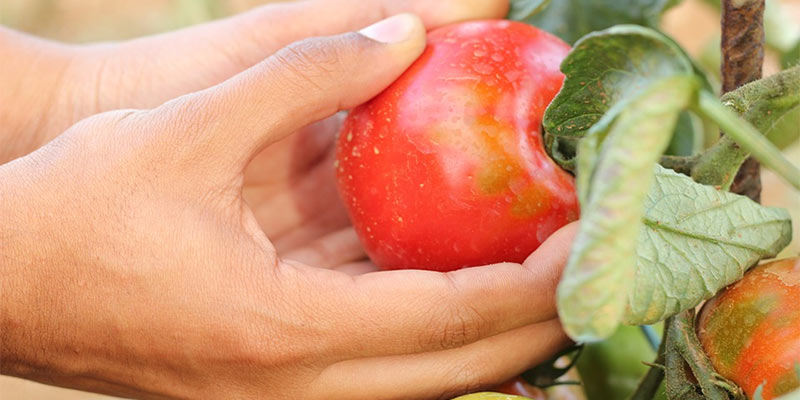
Everyone has to start out somewhere. If you have a desire to grow a green thumb, or if your fingers are green but you started out using non-organic methods and want to change your ways, never fear. We here at Garden Furnitureland have put together a few tips on how to start your own organic garden no matter what expertise you may or may not have.
What Is Organic?
Simply put, organics are derived from living matter. In the realm of gardening, it means to grow your fruits, vegetables without the use of anything synthetic. This includes fertilizers, pesticides, and anything chemical to make your garden grow.
It also goes a step further. To be an organic gardener is about creating an ecosystem that is supported as a whole, including the soil, insects, and other microorganisms that live among your plants. So where do you start?
Get It Ready
Where do you plan on creating your organic garden? A nice sunny area on your property should suffice since most vegetables and fruits require plenty of sun to reproduce well. Once you pick the place you should plan out your plot. Where will you put your tomatoes? Should they go next to the okra or the eggplant?
This is completely up to you. Just be sure to know the needs of everything you are planting in your garden so the tomatoes are in full sun but the lettuces are a bit shaded. Since this is a list of tips for beginners we suggest to only get a few items your first time around and let it grow each year. Through trial and error, you will learn how your garden should be set up.
Equipment
Some of the basic tools you’d want to have are propagation containers, a tiller, a spade, a wheelbarrow, compost bin and water hose. These tools helps create and maintain healthy organic gardens for an increased harvest. You would also want to check if these tools are in good working condition. One example of a faulty equipment is a leaky hose.
Wasting water is not exactly on par with creating an organic garden so, if your hose does have a leak you should check out this advice from The Backyard Boss. You don’t want to create a puddle of water in your lawn while you are using the sprinkler to water your garden.
Collect Your Plants
It’s about time to head to the local nursery to either purchase the seeds or seedlings that you will plant in your garden. This is where you should try not to go too crazy. Since you are a beginner, buying too many plants could prove to be more of a problem in the long run.
Try four or five different things. For example, one to two tomato plants, a pepper plant, a bean plant, an eggplant, and a few herbs should do.
Dig Your Holes
Make sure to check the plant you purchase and how much room is needed around it to grow properly. Each plant should have a little plastic name card with that information including the sun and watering requirement. When you plan out the map start digging the holes.
Put Your Plants In
Don’t wait too long to put your plants into their forever home in the garden. Plants left in the little plastic containers too long could die easily. They are very vulnerable going from one location to another. So be sure to get them in there but don’t pack the dirt around them too tightly either. It should be loose enough for your plant to get the water and nourishment they need, besides weeds love compacted soil.
Seed Gardens
If you are starting out from seeds it is recommended that your start growing your seeds indoors before you plant them in your garden. This should be started quite a few weeks before you plan on putting them into the ground.
Start Weeding
Make sure to identify any invasive plants in the plot you chose for your garden and you get rid of them right away. All soil has weed seeds but only the first inch or so gets the sunlight so the ones below don’t produce. If you dig a hole for you plant though, you are digging up weed seeds so keep an eye you as the season goes on
Organic Mulch
Once your seedlings are planted and the weeds are under control apply mulch to the top. You can use plastic or newspaper clippings but since we are focusing on creating an organic garden, it would make sense to use an organic much. Some options are tree bark, hay, or grass clippings. When these substances die and decompose they will naturally fertilize your garden.
Create a Watering Schedule
As much as a garden needs sun it needs to be watered. Again, different varieties have different requirements. You don’t want to plant a water loving vegetable next to one that doesn’t require a ton. You run the risk of drowning some of your seedlings.
As a rule of thumb though, most garden occupants need an inch of water per week. Still, plants that are placed in the sun most of the day will need more water than those planted in the shade.
Keep Weeding
Weeds will kill your plants and since our goal is to create an organic garden, using a weed killer is somewhat out of the question. There are organic green weed killers but if you want an authentic experience you need to get dirty and pull them out by hand.
The idea of this is to have fun and create a beautiful bounty of fruits and vegetables to feed your family. Before you know it you will not only have an organic garden but your meals will fall under the title of self-sustained, which also cuts down on your carbon footprint.
